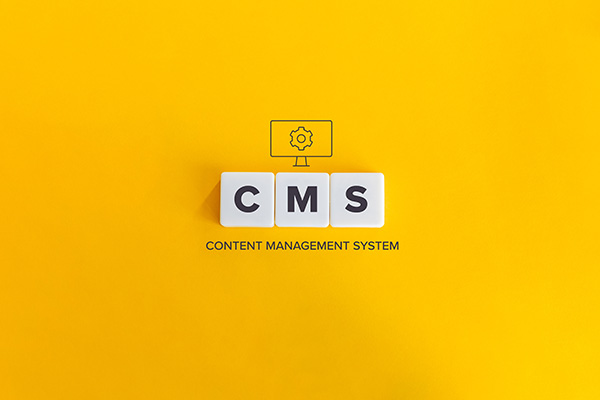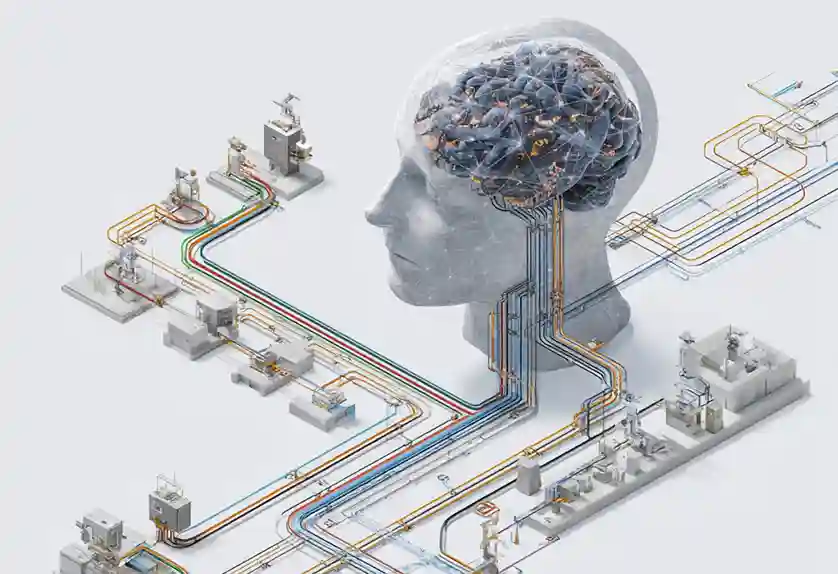Content management has evolved from just a tool for websites to mobile phones and other digital channels such as AR/VR, e-commerce, digital signage, OTT video experiences, IOT devices, and more. A headless CMS is crucial to addressing these new challenges.
Choosing a proprietary headless CMS to manage your content operations can seem like a good idea. However, an open-source option can provide additional benefits and increased long-term flexibility. We’ve compiled a list of eight open-source headless CMS tools for you to choose from.
What Is an Open Source Headless CMS?
“Headless” simply means that there is no frontend. In a headless CMS, the content delivery process happens over an API instead of a proprietary framework. It provides an API and backend system for authoring, storing and delivering content.
Headless CMS compensates for the lack of a frontend by publishing content using an API or web service that any frontend app can retrieve content from.
For our purposes, we consider an open-source headless CMS as an freely available headless CMS with an OSI-approved open source license that developers can modify and share.
Why Choose An Open Source CMS?
In a report on Pupuweb, 63% of respondents prefer open source headless CMS they can host themselves compared to support for SaaS-hosted CMS. Unlike proprietary software, open-source headless CMS makes it easy for developers to build and maintain their web infrastructure.
While offering similar functionalities and features as proprietary headless CMS tools, open-source headless CMSs offer several essential benefits such as lower costs, better security, more community support, and higher flexibility to deliver across several channels or frameworks.
No Vendor Lock-in
Most CMS platforms are available as SaaS products which you only need to license. While this does provide benefits, it also leaves your CMS at the mercy of the vendor, should they decide to raise their prices or go out of business. In addition, using a proprietary platform may also require hiring developers with specific skill sets for that project.
Open-source headless CMSs built with technologies like Git use a different approach by relying on established open-source standards and development approaches.
Lower Costs
With open-source headless CMSs, you get lower costs of implementation in comparison to proprietary headless CMS. Also, support from the developer community has the possibility of further reducing maintenance and upgrade costs.
Better Security
In proprietary headless CMS, the platform handles compliance and security.
For open-source headless CMSs, compliance and security benefit from the very fact that the entire universe has access to the source code, so the community and bounty hunters will uncover issues faster. This approach also provides better security as developers can easily fix security issues that they encounter.
Better Customizability
Developers can easily identify and implement powerful and scalable feature integrations. It also helps to enhance the skills and applicable knowledge of developers.
The only limit to open-source development is the developer community’s ability and imagination to proffer solutions and extend its features.
You can easily access and add new features or extend its existing features. It ensures that you’re not limited to only existing feature sets.
Community Support
A vibrant developer community is a primary reason to adopt open-source development. With a shared commitment to support and improve the platform, development and solutions are faster, highly tested, better, and more effective than proprietary headless CMS.
In open-source headless CMS, the community’s collective skills and ideas play a key role in development and troubleshooting whenever a problem arises.
One argument often put against open source development is its code visibility. However, it only means that code issues and vulnerabilities are equally visible to the developers. As a result, they are able to easily provide a solution to those problems.
Top 8 Open Source Headless CMSs
CrafterCMS
CrafterCMS is a headless CMS with several unique benefits for enterprises.It provides an intuitive WYSIWYG interface so marketers can author and preview content for any channel or device. It also provides extensible REST and GraphQL APIs, so developers can streamline development and integrations.
CrafterCMS is based on Git, enabling management of all content, code and configuration within a single, distributed repository. It is also frontend agnostic, supporting any frontend development framework such as React, Angular, or Vue.
Developers can use CrafterCMS for their continuous integration/continuous delivery (CI/CD) operations. CrafterCMS enables IT, operations, and content authors to collaborate and work together to deliver a powerful and seamless omnichannel experience through native support for DevContentOps processes.
CrafterCMS is a de-coupled system, meaning its content authoring system (Crafter Studio) is truly decoupled from the content delivery system (Crafter Engine) and the digital experience apps/sites running on Crafter Engine’s APIs. As a serverless and stateless system, Crafter Engine satisfies the need for highly scalable, extremely fast, and highly secure dynamic experiences to be delivered.
Directus
Directus is a data-driven open source CMS platform. It is a fantastic choice for projects that require custom database creation. It is built on Node.js and uses Vue.js to provide the admin interface. You can manage content using its elegant and intuitive admin app.
Directus is a complete headless CMS for developers. It provides self-hosting and on-demand cloud services as part of its unique offerings. It also provides translations, workflows, event hooks, and search capabilities.
Directus offers RESTful or GraphQL APIs that can connect to any existing database or create a new one to complement your project. It provides the best support for relational databases such as MariaDB and SQLite and other commercial databases like MySQL and OracleDB.
Directus API allows you to create custom endpoints with a CL interface for creating and managing projects.
Apostrophe
Apostrophe is a full-fledged content management system built with Node.js and MongoDB.
In contrast to other headless CMS, Apostrophe provides a headless version via Apostrophe-headless, that you can integrate with any Jamstack while providing content through its RESTful API support.
Apostrophe provides developers with the flexibility to combine the traditional CMS and headless CMS functionalities to meet specific project requirements.
Apostrophe-headless is an extension of Apostrophe. Therefore, you must install the npm package, and then activate and expose the required content through the REST API.
You can extend Apostrophe’s functionalities with third-party extensions and integrations such as Salesforce Personas, Webhook notifications, Stagecoach, and more.
Strapi
Strapi is another open-source headless CMS tool available today. It is based on Node.js. Developers can use Strapi to manage their content and API needs.
Strapi is a developer-focused platform that provides developers with flexible and extensible management and distribution of content through tools and platforms of their choice.
Strapi is capable of creating everything from simple websites to mobile apps, as well as fully-fledged e-commerce platforms. Additionally, it supports both RESTful and GraphQL interaction with the API. It also provides a powerful CLI module that allows you to easily and quickly create, edit, and manage your projects.
Strapi supports SQL and NoSQL databases such as SQLite, PostgreSQL, MySQL, MariaDB, and MongoDB. It is also frontend agnostic, meaning you can use it with any frontend development framework such as React, Angular, or Vue.
Ghost
Ghost is an open-source headless CMS also built on Node.js. It is a publishing platform that offers full-stack functionality. It is an API-driven decoupled headless CMS, that is, you can use it as headless or through templates.
Ghost uses a set of RESTful API endpoints together with a frontend and a decoupled admin panel to serve its content. It also provides Handlebars.js as its default frontend.
Ghost offers organizations that wish to have more control over their content management systems higher performance and flexibility. It also provides an out-of-the-box set of tools such as Ghost CLI for managing installations and configurations. With Ghost, you get a modern publishing tool with a feature-rich content editor, multi-language content creation, and multi-author support.
Hygraph (was GraphCMS)
Hygraph (previously known as GraphCMS) is a native GraphQL open-source headless CMS that allows you to design digital experiences so your frontend, backend, and services all work together seamlessly.
Additionally, Hygraph provides an API Playground tool that helps you save countless hours in debugging or testing. APIs are easy for developers to use because they are clear and concise. The availability of GraphQL as a query language is an additional benefit.
Hygraph is front-end agnostic. Furthermore, Hygraph makes use of a flexible content modeling engine and an approach to personalizing content. It enables developers to adapt content to meet the expectations of audiences by modeling the content to match the user's requirements.
Cockpit CMS
Cockpit is an easy-to-use headless CMS. It allows you to manage and deliver structured content without the need for external resources. Cockpit's headless CMS is maintained by Netlify and is available on multiple devices.
One interesting part of Cockpit is that you can build unique applications and provide them with content easily.
Cockpit’s flexibility and uncomplicated backend interface along with scalability are some of its main advantages. With Cockpit, you don't have to build any scripts or add any advanced PHP libraries to your project.
dotCMS
dotCMS is an open-source hybrid CMS that combines the functionalities of a traditional CMS, headless CMS, and a combination of both.
dotCMS provides an API-first infrastructure with no-code support that allows you to build, manage, and deliver content-rich digital applications including websites, mobile applications, and single-page applications.
dotCMS’s API-based approach offers users the ability to manage and deliver content assets across their preferred channel.
Choosing the Right Open Source Headless CMS
With the rise of multiple digital channels, headless content management systems are becoming critically important. In contrast to proprietary tools, an open-source headless CMS offers more community support, lower costs, better security, customizability, and flexibility.
Picking out any CMS at all won’t be easy, therefore you should look for a vendor with features that satisfies your company’s requirements and provides the best support. Now you have the factors and tools, what’s the ideal open-source headless CMS tool for you?

 Alexander Fashakin
Alexander Fashakin




